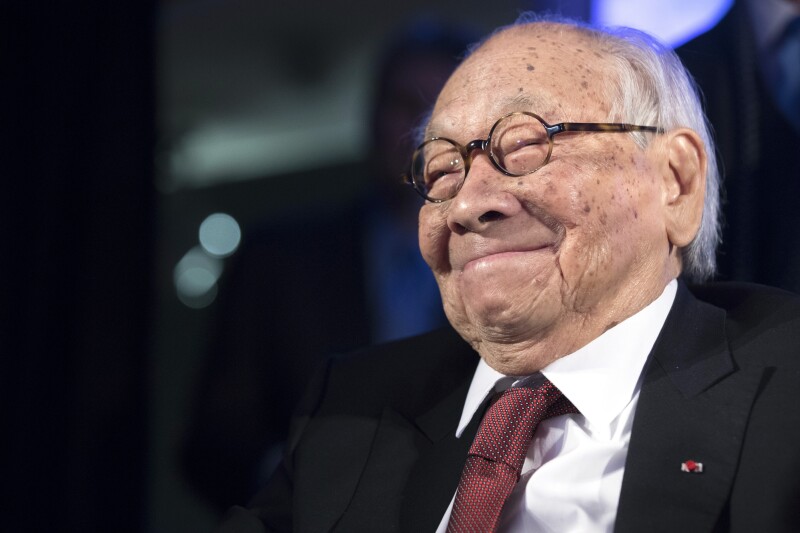I.M. Pei, the versatile, globe-trotting architect who revived the Louvre with a giant glass pyramid and captured the spirit of rebellion at the multi-shaped Rock and Roll Hall of Fame, has died at age 102.
A slight, unpretentious man, Pei developed a reputation as a skilled diplomat, persuading clients to spend the money for his grand-scale projects and working with a cast of engineers and developers.
Some of his designs were met with much controversy, such as the 71-foot faceted glass pyramid in the courtyard of the Louvre museum in Paris. French President Francois Mitterrand, who personally selected Pei to oversee the decaying, overcrowded museum’s renovation, endured a barrage of criticism when he unveiled the plan in 1984.

I.M. Pei accepting an award in 2016
Photo by Mary Altaffer/AP Photo
Many of the French vehemently opposed such a change to their symbol of their culture, once a medieval fortress and then a national palace. Some resented that Pei, a foreigner, was in charge.
But Mitterrand and his supporters prevailed and the pyramid was finished in 1989. It serves as the Louvre’s entrance, and a staircase leads visitors down to a vast, light-drenched lobby featuring ticket windows, shops, restaurants, an auditorium, and escalators to other parts of the vast museum.
“All through the centuries, the Louvre has undergone violent change,” Pei said. “The time had to be right. I was confident because this was the right time.”
No challenge seemed to be too great for Pei, including the Rock and Roll Hall of Fame, which sits on the shore of Lake Erie in downtown Cleveland, Ohio. Pei, who admitted he was just catching up with the Beatles, researched the roots of rock ’n’ roll and came up with an array of contrasting shapes for the museum. He topped it off with a transparent tent-like structure, which was “open—like the music,” he said.
Pei, who was born in China, established his own architectural firm in 1955, a year after he became a U.S. citizen. He remained based in New York City. Among the firm’s accomplishments are the Jacob Javits Convention Center in New York City and the United States Holocaust Memorial Museum in Washington.











